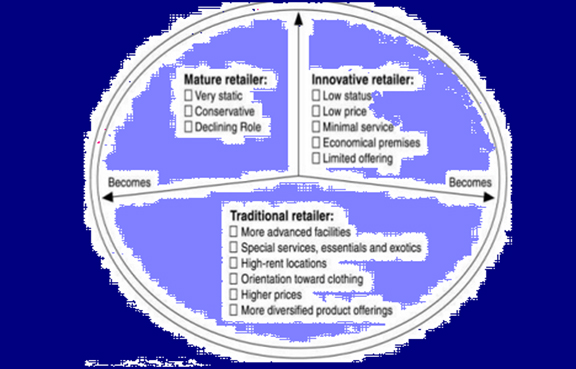Conflict Theory: Numerous researcher studies the various aspects of a Conflict theory to explain retail evolution (Berens, 1980). Gist (1968) suggested the Dialectic theory, influential Conflict theory that has been the basis for the common concepts of many conflict theories. The Dialectic theory is based on Karl Marx’s Theory of Evolution. Blake (1939) summarized the Theory of Evolution as the ” the progress of change means that everything must decline to make way for new things, that nothing in nature or society is “fixed” or “sacred” since it must share the process of transformation. Dialectics means, specifically, that the phases of each development repeat former phases, but on a different plane. That is, each step is the negation of the previous step, and the next step must be a negation of that negation. It does not restore the original situation, but invariably creates a third situation, which is different because of the double process of negation” (p. 639 – 640). Gist (1968) reinstated the “situation” from the Theory of Evolution with a “retail institution” in the Dialectic theory. He proposed that an existing retail institution is challenged by its competitor because it has competitive advantages over the existing retail institution (i.e., thesis1). As time passes, the first retail institution imitates the characteristics of competitor to upgrade its existing characteristics and finally creates a new retail institution.
Some researchers have attempted to combine two or more evolution theories to explain retail evolution. Some researchers have tried to combine Cyclical theory with either Environmental or Conflict theory (eDeiderick & Dodge, 1983).
Critical success factor in retailing is competition, trends in market positioning and organizational capabilities.




8 Comments